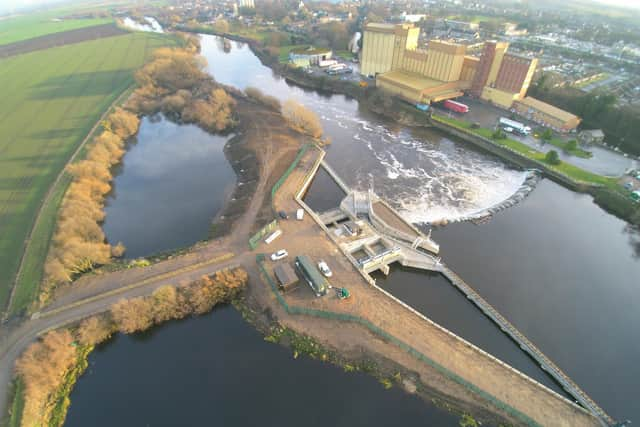Knottingley weir to generate power for dozens more homes
and live on Freeview channel 276
Plans were proposed to alter the height of the crest at Brotherton Weir on the River Aire at Knottingley.
Wakefield Council’s planning gave planning permission for the blueprints which were submitted by Northern Hydropower Ltd, which opened its £7.5 million hydropower plant next to the weir in 2017.
Advertisement
Hide AdAdvertisement
Hide AdThe site already generates 2,500,000 kWh, enough to power 650 homes.


The company will add steel supports to the weir - the highest point where the water flows across before heading down a slope.
In doing so, it could help generate enough electricity for another 27 homes a year that can be taken off the national grid.
The plans have the support of the owners of the land, the Canal & River Trust.
Advertisement
Hide AdAdvertisement
Hide AdA statement written by Mark Simon of Northern Hydropower Ltd reads: “The proposed plan has been created in response to the desire of the Canal & River Trust to exploit the resources of the river more efficiently using the existing hydroelectric power station at the weir.
“A higher weir crest will allow the hydropower station to operate at maximum capacity for a great proportion of the year.”
The project will be put out for tender to a range of civil works contractors and will be let under contract.
Construction on site should take no more than five weeks during which there will be a team of up to 10 civil engineering contractor personnel working on the site.
Advertisement
Hide AdAdvertisement
Hide AdOpened in November 2017, Knottingley Hydropower scheme is the biggest station of its kind to be built since the turn of the century.
It took 15 months to assemble and was officially opened by England cricket legend, Sir Geoffrey Boycott.
The two huge turbines process 15 tonnes of water a second and produces enough energy to boil five million cups of tea per week.
Half a mile downriver from Ferrybridge power station, it includes fish passage allowing salmon, eels and other migratory fish to navigate the weir, which they were unable to do before.
It is expected that the plant will be operational for a century or more.